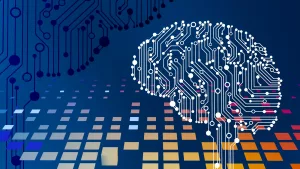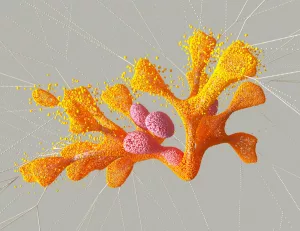Neural networks, the building blocks of deep learning models, are a set of algorithms inspired by the human brain’s neural network structure. These networks consist of interconnected layers of nodes, each performing complex mathematical operations on the input data. Deep learning models take this concept further by utilizing multiple layers to extract high-level features from the data. They leverage the hierarchical structure of neural networks to learn intricate patterns and relationships within the data. The process involves passing data through the network, with each layer transforming the input into representations that are increasingly abstract and complex. This hierarchical feature extraction is a key strength of deep learning, enabling the models to understand and interpret data at various levels of abstraction.
The Architecture of Neural Networks
Neural networks are typically organized into three main types of layers: input, hidden, and output. The input layer receives the raw data, such as images, text, or audio signals. The hidden layers, which can vary in number, perform feature extraction by processing the input data through a series of transformations. Finally, the output layer produces the prediction or classification.
Input Layer
The input layer is responsible for taking in the initial data and feeding it into the network. Each node in this layer represents a feature or component of the data. For instance, in image processing, each node might correspond to a pixel value. The input layer sets the stage for all subsequent processing within the network.
Hidden Layers
Hidden layers play a crucial role in transforming and extracting features from the input data. These layers can vary in number and are where the “deep” in deep learning comes from. Each node in a hidden layer applies a mathematical function to the input data, often followed by a non-linear activation function, to produce an output that serves as input to the next layer. The depth and complexity of these layers allow the model to learn intricate patterns.
Example: In a convolutional neural network (CNN) used for image recognition, hidden layers might include convolutional layers that apply filters to detect edges, textures, or other patterns in the image.
Output Layer
The output layer provides the final prediction of the network. For classification tasks, this might involve assigning a probability to each possible class label. For regression tasks, it might produce a continuous value. The design of the output layer depends on the specific task the model is being trained to perform.
Learning through Training
Deep learning models learn from data through a process known as training. During training, the model is fed with labeled data samples, and it adjusts its internal parameters iteratively to minimize the difference between its predictions and the actual labels. This optimization process, often done using algorithms like gradient descent, helps the model improve its performance over time.
The Training Process
- Initialization: The model’s parameters (weights and biases) are typically initialized randomly or using specific techniques like Xavier or He initialization to ensure proper convergence.
- Forward Pass: The input data is passed through the network layer by layer. Each layer transforms the data and passes it to the next, finally producing an output.
- Loss Calculation: The output of the network is compared to the actual labels using a loss function. Common loss functions include mean squared error for regression and cross-entropy loss for classification.
- Backward Pass (Backpropagation): The loss is used to calculate the gradient of each parameter, indicating how much the parameter should change to reduce the loss.
- Parameter Update: Optimization algorithms, such as stochastic gradient descent (SGD), use the gradients to update the parameters, moving them in the direction that reduces the loss.
- Iteration: The process is repeated for many iterations or epochs, gradually improving the model’s performance.
Batch Processing
To efficiently train large datasets, data is often divided into smaller batches. This technique, known as mini-batch gradient descent, allows the model to update its parameters more frequently and can lead to faster convergence.
Feature Extraction and Representation Learning
One of the key strengths of deep learning models is their ability to automatically learn relevant features from the input data. Through the iterative process of training, the model refines its internal representations to capture the essential characteristics of the data. This feature extraction and representation learning enable deep learning models to generalize well to unseen data.
Automatic Feature Extraction
Traditional machine learning models often require manual feature engineering, where domain experts select relevant features. In contrast, deep learning models automatically learn these features from raw data. For instance, in natural language processing, a model might learn to recognize patterns in word sequences without explicit feature definitions.
Representation Learning
Representation learning focuses on creating meaningful representations of the data that capture its underlying structure. These representations make it easier for the model to extract relevant information and make informed decisions. By learning hierarchical representations, deep learning models can handle complex data types, such as images and text, with remarkable effectiveness.
Example: In a speech recognition system, deep learning models can learn to identify phonetic patterns and intonations that are crucial for understanding spoken language.
Backpropagation and Optimization
Backpropagation is a fundamental algorithm in deep learning that allows models to update their parameters based on the difference between predicted and actual outputs. By propagating this error back through the network, the model can adjust the weights of connections to improve its performance. Optimization algorithms like Stochastic Gradient Descent help efficiently update these parameters.
The Role of Backpropagation
Backpropagation is integral to the training process of deep learning models as it enables the model to learn from its mistakes and adjust its parameters accordingly. By calculating the gradients of the loss function with respect to each parameter, backpropagation guides the model on how to update its weights to minimize errors.
Optimization Algorithms
Optimization algorithms play a crucial role in this process by efficiently adjusting the model’s parameters to reach the optimal configuration for making accurate predictions. While SGD is widely used, other algorithms such as Adam, RMSprop, and AdaGrad offer adaptive learning rates and other improvements that can accelerate training and enhance model performance.
Tip: Experimenting with different optimization algorithms and learning rates can significantly impact the efficiency and accuracy of your model’s training process.
Generalization and Overfitting
Deep learning models aim to generalize well to unseen data by learning underlying patterns and structures in the training data. However, there is a risk of overfitting, where the model performs well on training data but fails to generalize to new examples. Regularization techniques, such as dropout and weight decay, help prevent overfitting and improve the model’s generalization.
Understanding Overfitting
Overfitting occurs when a model learns the training data too well, capturing noise and fluctuations rather than the underlying distribution. This results in poor performance on new, unseen data. Indicators of overfitting include a significant gap between training and validation loss or accuracy.
Techniques to Improve Generalization
- Dropout: Randomly “drops” units and their connections during training, forcing the model to learn more robust features.
- Weight Decay (L2 Regularization): Adds a penalty to the loss function for large weights, discouraging overly complex models.
- Data Augmentation: Involves creating new training examples by modifying existing data, such as rotating or flipping images, to improve robustness.
- Early Stopping: Monitors validation performance and stops training when performance ceases to improve.
Example: In image classification tasks, augmenting the dataset with rotated or flipped images can significantly enhance the model’s ability to generalize to different perspectives.
Practical Tips for Building Effective Deep Learning Models
Building deep learning models involves a series of decisions and considerations. Here are some practical tips to guide you:
- Start Simple: Begin with a simple model architecture and gradually add complexity as needed. This helps prevent overfitting and allows you to understand the model’s behavior.
- Use Transfer Learning: Leverage pre-trained models and fine-tune them for your specific task. This can save time and resources, especially when working with limited data.
- Monitor Model Metrics: Track not only accuracy but also precision, recall, and F1-score, as these can provide deeper insights into model performance.
- Experiment and Iterate: Deep learning is an iterative process. Experiment with different architectures, hyperparameters, and techniques to find the best configuration for your task.
- Keep an Eye on Resources: Training deep learning models can be resource-intensive. Monitor GPU usage and optimize your code to ensure efficient use of computational resources.
- Stay Informed: The field of deep learning is rapidly evolving. Keep up-to-date with the latest research and techniques to enhance your models.
Real-World Applications and Case Studies
Deep learning has revolutionized numerous industries, from healthcare to entertainment. Understanding how these models are applied in real-world scenarios can provide valuable insights.
Healthcare
In healthcare, deep learning models are used for medical image analysis, such as detecting tumors in MRI scans. By training on vast amounts of imaging data, these models can achieve accuracy comparable to human radiologists.
Case Study: A deep learning model developed by researchers at Stanford University was trained to identify skin cancer from images, demonstrating accuracy on par with dermatologists.
Autonomous Vehicles
Deep learning is critical in the development of autonomous vehicles. Models are used to process sensor data, such as camera and LiDAR inputs, to understand the vehicle’s environment and make driving decisions.
Example: Tesla’s Autopilot system utilizes deep learning to detect and respond to traffic signals, obstacles, and road conditions, continually improving through fleet learning.
Natural Language Processing
In natural language processing, deep learning models power applications like chatbots and language translation. These models learn from vast corpora of text data to understand and generate human language.
Case Study: Google’s BERT model, a transformer-based architecture, has significantly improved the accuracy of many NLP tasks, such as sentiment analysis and question answering.
Challenges and Future Directions
While deep learning has achieved remarkable success, it also faces challenges that researchers and practitioners are actively addressing.
Explainability and Interpretability
Deep learning models are often criticized for being “black boxes,” meaning their decision-making processes are not easily interpretable. Efforts are ongoing to develop methods that make these models more transparent and understandable.
Tip: Techniques like SHAP (SHapley Additive exPlanations) and LIME (Local Interpretable Model-agnostic Explanations) can help elucidate model predictions.
Data Requirements
Deep learning models require large amounts of labeled data to train effectively. This can be a barrier in domains where data is scarce or expensive to obtain.
Solution: Techniques like semi-supervised learning and synthetic data generation are being explored to alleviate data constraints.
Computational Costs
Training deep learning models can be computationally expensive, requiring significant hardware resources. Advances in model compression and efficient architectures aim to reduce these costs.
Example: The development of lightweight models like MobileNet and EfficientNet enables deployment on resource-constrained devices, such as smartphones.
Conclusion
Deep learning continues to transform industries and redefine the boundaries of what’s possible with machine learning. By understanding the underlying principles, techniques, and challenges, practitioners can harness the full potential of deep learning models to solve complex, real-world problems. Whether you’re building models for image recognition, natural language processing, or any other domain, the key is to remain curious, experiment, and keep pushing the limits of your understanding and creativity.



